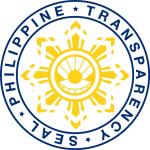INTRODUCTION
Formal peace negotiations between the Philippine Government and the Rebolusyonaryong Partido ng Manggagawa ng Pilipinas/Revolutionary Proletarian Army/Alex Boncayao Brigade (RPM-P/RPA/ABB) started on December 1999 under the Estrada administration. Prior to this, peace talks were at the local levels involving concessions for ceasefire in the localities. On 6 December 2000, the Peace Agreement between the GPH and RPM-P/RPA/ABB was signed. This agreement covers the cessation of hostilities, confidence-building measures, releasing of prisoners, and implementation of development projects in identified areas.
In early 2002 under the Arroyo administration, a Clarificatory Document was signed in response to the issues raised on the substance and procedural aspects of the 2000 Agreement. The Joint Enforcement and Monitoring Committee (JEMC) was formed to monitor GPH and RPM-P/RPA/ABB’s commitments under the Agreement.
In 2007, however, the RPM-P/RPA/ABB Central Committee was divided into two over the issue of control, thereby, created splinter groups – these are the Tabara-Paduano Group (TPG) led by Veronica Tabara and Stephen Paduano and the Nilo Dela Cruz Group (NDCG). As a result of the split, Nilo de la Cruz Group assumed the control over the RPA/ABB in Luzon and Iloilo provinces, while Paduano Group has the support of the whole RPA/ABB membership in Negros Occidental. The RPA/
ABB members in Panay, Mindanao, Aklan and Antique have mixed affiliations.
In 2010, both factions expressed interest in completing the implementation of the 2000 Peace Agreement. However, it was only the Paduano Group that continued the process of finalizing a draft Closure Agreement with the GPH.






